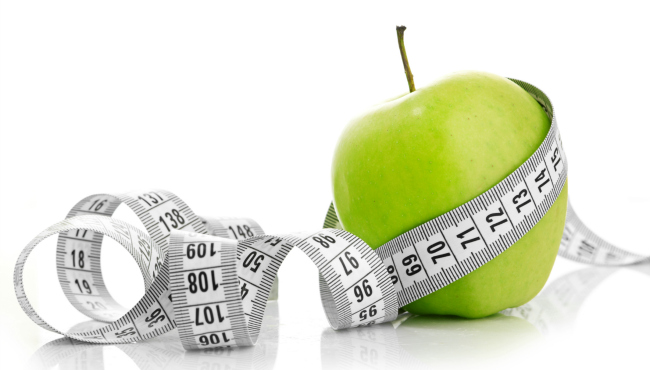 by Cheryl Alker
by Cheryl Alker
As the clock strikes its last chime, so will come countless New Year’s resolutions. Across America, millions of people will promise themselves and others that they are going to get fit and healthy in 2015. Unfortunately, by the end of January a significant proportion of those well-intentioned folks will have quit their New Year’s regime. By March, 2015 anywhere between 50% to 75% will no longer be exercising regularly and will have quit their healthy eating habits.
So why do we find it so difficult to maintain a healthy lifestyle?
We know that regular exercise combined with healthy eating will not only give us the body shape we desire, but more importantly in most cases will improve our overall well-being.
Here at Our Wonderful World we would like to take the “Commitment to be Fit and Healthy” pledge in 2015 and provide you with as much information as we can to keep you focused on your goals.
So let us begin at the beginning, where and how do you start?
Exercise: The first question you have to ask yourself is what type of exercise you think you might enjoy?
- Do you love to swim?
- Will you be happy just running or walking on a treadmill or do you need the latest machines to keep you motivated?
- Is yoga, stretch or pilates your thing?
- Are you the outdoor type?
- Would tennis or golf be something that could keep you motivated?
Answering the above questions is vital for success. Your enthusiasm may be high at the moment, but unfortunately, even with all the best will in the world, this will wane. The right choice must be made now.
- If you have decided that joining a gym is the answer for you, then consider the following:
- If variety is your thing, you’ll need a gym with lots of group classes, maybe a pool, a racquetball and basketball court and many different types of machines.
- If you just need to get in and out, find a facility set up for a “quickie workout.” This way you won’t be paying for all the classes and amenities you won’t be using.
- If your daily life runs at 110 miles per hour, maybe you need to consider some balance; therefore, a mind/body studio that offers yoga, stretch and pilates would be more beneficial.
The good thing is they are all available and will no doubt be close by; although, convenience is a priority. It will be far too easy not to go if you’re travelling time is too great. Decide when you’re going to work out most of the time. If it’s in the morning or on weekends, a facility close to home may be more suitable; however, if you want to fit your workout in during lunch or after work, choose a gym close to the office.
When you are checking out gyms, besides researching the facilities and amenities they offer, ensure that you ask what type of credentials the staff has. Also check the facility’s emergency procedures; not only should their staff be able to coach you through a safe and effective exercise program, they should know how to handle a medical emergency.
Of course a gym may not be what you are looking for; perhaps outdoor pursuits are more up your alley, like walking, cycling, tennis, etc. If this is the case, you’ll need to consider how the weather variations throughout the year will affect your ability to adhere to your program regularly and long term. A back-up plan may need to be put in place. For instance, when temperatures soar, swimming or walking may be your first choice and in the cooler months cycling, tennis or jogging. When the storms arrive you may have to consider working out first thing in the morning when it is cooler – and you’re less likely to be hit by a thunder bolt on your run!
No matter what your preference, consider finding a “workout buddy.” Making an appointment with someone, whether it’s a friend or a trainer, ensures a greater chance that you won’t cancel on yourself. No matter how you feel on your workout day, make yourself a promise that you do at least ten minutes. If, after that first ten minutes you are still not up to the challenge, then you may stop and go home. You will often find the most difficult part of your workout is getting there; once you have started it really is not that bad!
As we all know regular exercise is only half of the equation for success you have to couple it with a healthy eating plan. Healthy eating is not about strict nutrition philosophies, staying unrealistically thin or depriving yourself of the foods you love. Rather, it’s about feeling great, having more energy and keeping yourself as healthy as possible – all of which can be achieved by learning some nutritional basics and incorporating them in a way that works for you.
Choose the types of foods that improve your health and avoid the types of foods that raise your risk for such illnesses as heart disease, cancer, and diabetes. Expand your range of healthy choices to include a wide variety of delicious foods. Learn to use guidelines and tips for creating and maintaining a satisfying, healthy diet.
Healthy Eating: Here are some tips for how to choose foods that improve your health and avoid foods that raise your risk for illnesses while creating a diet plan that works for you.

Eat enough calories but not too many: Maintain a balance between your calorie intake and calorie expenditure. That is, don’t eat more food than your body uses. The average recommended daily allowance is 2,000 calories, but this depends upon your age, sex, height, weight and physical activity.
Eat a wide variety of foods: Healthy eating is an opportunity to expand your range of choices by trying foods ? especially vegetables, whole grains, or fruits ? that you don’t normally eat.
Keep portions moderate: Especially high-calorie foods. In recent years serving sizes have ballooned, particularly in restaurants. Choose a starter instead of an entrée, split a dish with a friend and don’t order supersized anything.
Eat plenty of fruits, vegetables, grains, and legumes: Foods high in complex carbohydrates, fiber, vitamins, and minerals, low in fat and free of cholesterol. Try to get fresh, local produce.
Drink more water: Our bodies are about 75% water. It is a vital part of a healthy diet. Water helps flush our systems (especially the kidneys and bladder) of waste products and toxins. A majority of Americans go through life dehydrated.
Limit sugary foods, salt, and refined-grain products: Sugar is added to a vast array of foods. In a year, just one daily 12-ounce can of soda (160 calories) can increase your weight by 16 pounds.
Don’t be the food police: You can enjoy your favorite sweets and fried foods in moderation as long as they are an occasional part of your overall healthy diet. Food is a great source of pleasure, and pleasure is good for the heart – even if those French fries aren’t!
One step at a time: Establishing new food habits is much easier if you focus upon and take action on one food group or food fact at a time.
Healthy eating begins with learning how to “eat smart.” It’s not just what you eat, but how you eat. Paying attention to what you eat and choosing foods that are both nourishing and enjoyable helps support an overall healthy diet.
- Take time to chew your food: Chew your food slowly, savoring every bite. We tend to rush though our meals, forgetting to actually taste the flavors.
- Avoid stress while eating: When we are stressed, our digestion can be compromised, causing problems like colitis and heartburn. Avoid eating while working, driving, arguing or watching TV.
- Listen to your body: Ask yourself if you are really hungry. You may really be thirsty, so try drinking a glass of water first. During a meal, stop eating before you feel full. It actually takes a few minutes for your brain to tell your body that it has had enough food, so eat slowly. Eating just enough to satisfy your hunger will help you remain alert, relaxed and feeling your best.
- Eat early, eat often: Starting your day with a healthy breakfast can jumpstart your metabolism, and eating the majority of your daily caloric allotment early in the day gives your body time to work those calories off. Also, eating small, healthy meals throughout the day, rather than the standard three large meals, can help keep your metabolism going and ward off snack attacks.
Exhausted? Don’t be – now you have made this important decision. Don’t set yourself up for failure. Get it right at the outset, and this will be the last year you make “Getting Fit & Healthy” your Number One New Year’s Resolution.
